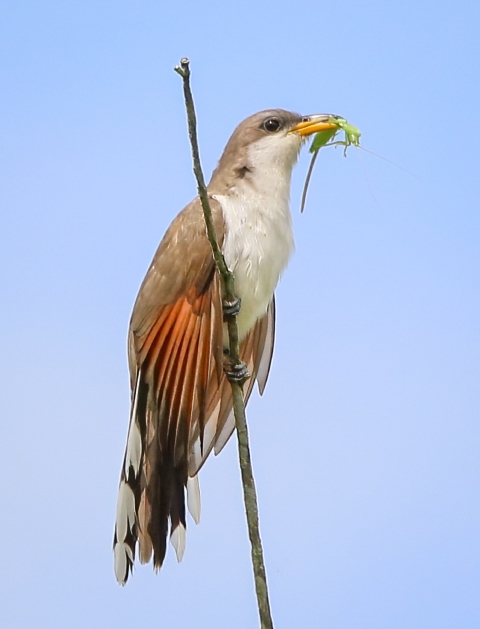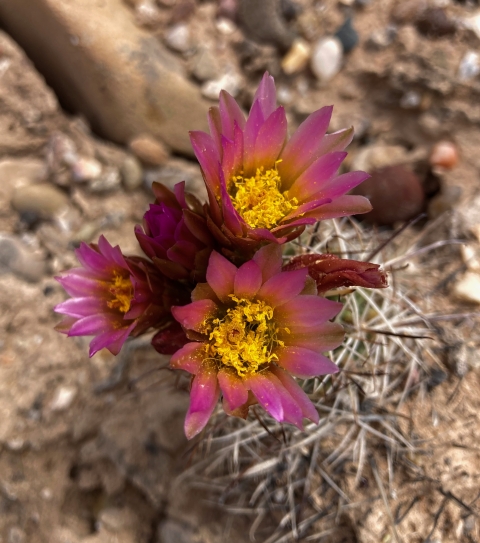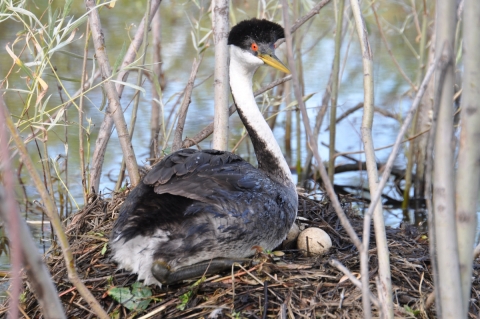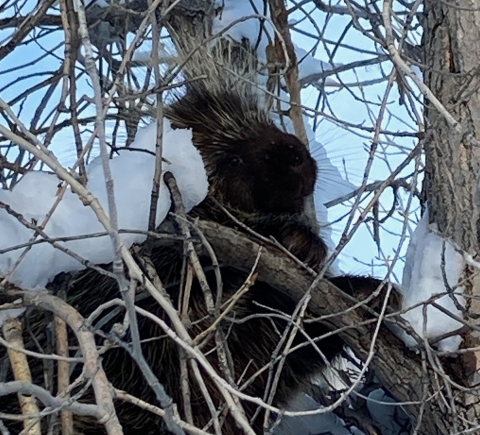Seasons of Wildlife
Ouray National Wildlife Refuge is a different place each time you explore it! Each season brings new colors and new wildlife sightings. Not only do the sights change with the seasons, but clouds, fog and clear skies offer an ever-changing skyscape. Rainbows, sunbursts, amber light that sets the hills and bluffs on fire, sunset and sunrise never disappoint. Read on to learn about the animals that use the Refuge throughout the year.
Spring
Beginning in late February or early March, thousands of migrating waterfowl stop to rest and refuel in Refuge wetlands, the only wetlands for miles around. By May, most of the migrating songbirds are starting to arrive. Birds also depend on the riparian riparian
Definition of riparian habitat or riparian areas.
Learn more about riparian corridor to feed on the abundant insect populations. Some birds, like the yellow-billed cuckoo, stay behind to nest here, but many will continue north to their breeding grounds. Juvenile Great-horned owls are beginning to learn how to fly, while the red-tailed hawks and ospreys are just beginning to nest. Many Canada geese pairs are establishing territories and nest sites.
If you think the high desert doesn't have much for flowers, think again! We have approximately 140 species of forbs (flowering plants that are not grasses). Admittedly, some of those aren't native, but still pretty. A sampling of our flowers are sego lilly, showy milkweed, wild sunflower, and scarlet globemallow.
Summer
Young of all species become visible after they are old enough to be able to escape from predators and start foraging with their parents. If you’re lucky, you’ll see river otter young on the river banks, elk calves crossing the river with their mothers, and songbirds feeding their noisy young offspring. There are lots of waterbird broods including ducks, coots, and grebes. Look for young western grebes riding on their parents' back! The best time to observe wildlife during the hot summer months is in the early morning and evening. Please check Refuge gate closing times. :)
Fall
As the cottonwoods begin to turn a brilliant yellow, birds begin their return trip through the Refuge on their way to wintering grounds in the southern United States, Central and South America. Elk are bugling within the valley while the other animals try to put on fat to survive the winter or the flight to wintering grounds. Large numbers of sandhill cranes passing through on their fall migration make lots of noise! You may hear bulging elk and howling coyotes in the very early morning and evening hours.
Winter
The Refuge is a quiet place in winter, as most of the migratory birds have headed south, although it's common to see large numbers of cranes into December. The Flaming Gorge Dam releases a constant flow of water throughout the winter. Although the Green River may freeze as it passes through the Refuge, some areas retain open water that support resident waterfowl such as mallards, Canada geese and bald eagles. The Refuge also provides important habitat for wintering mule deer, elk, and pronghorn. Bare trees in the winter also make porcupine viewing so much easier!






